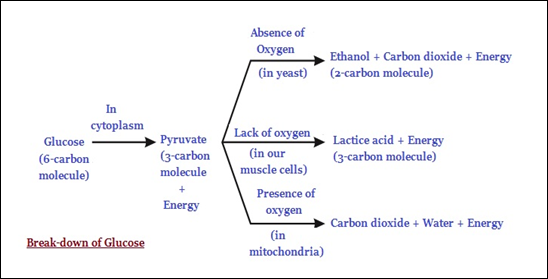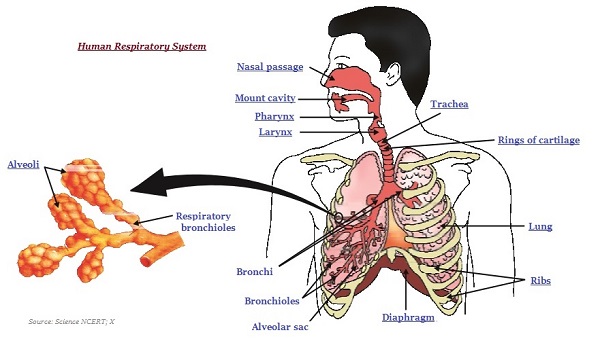
- Biology - Home
- Biology - Structure and Functions
- The Fundamental Unit of Life
- Biology - Tissues
- Biology - Animal Tissue
- Diversity in Living Organisms
- Biology - Plantae Kingdom
- Biology - Animalia Kingdom
- Biology - Vertebrata
- Biology - Transportation in Humans
- Biology - Transportation in Plants
- Biology - Excretion
- Biology - Control and Coordination
- Biology - Hormones in Animal
- How do Organisms Reproduce?
- Biology - Sexual Reproduction
- Biology - Reproduction in Animals
- Reaching the Age of Adolescence
- Biology - Heredity and Evolution
- Biology - Life Processes
- Biology - Respiration
- Microorganisms: Friend and Foe
- Biology - Why do We Fall Ill
- Biology - Natural Resources
- Biology - Our Environment
- Conservation of Plants and Animals
Biology - Respiration
Introduction
The food material, taken in during the process of nutrition, is used by cells and then they provide energy for various life processes.
Some organisms use oxygen to break-down glucose completely into carbon dioxide and water, such processes normally take place in cytoplasm.
The following diagram illustrates the whole process of break-down of glucose through various pathways −

During cellular respiration, the energy released, is immediately used to synthesize a molecule known as ATP.
ATP is further used to fuel all other activities in the cell. However, in these processes, ATP is broken down and give rise to a fixed amount of energy. This energy usually drives the endothermic reactions taking place in the cell.
Adenosine triphosphate or simply ATP is a small molecule used in cells as a coenzyme (see image given below).
More often, ATP is referred as the energy currency for most of the cellular processes (especially intracellular energy transfer).

Likewise, ATP transports chemical energy within cells for metabolism purpose.
In plants, at night, when the process of photosynthesis is not taking place, for such a period, CO2 elimination is the major exchange activity.
On the other hand, during the day, the CO2, which is getting generated during respiration, is used up for the photosynthesis process, hence there is no CO2 release. But, at this time, oxygen release is the major event.
The terrestrial animals can breathe the oxygen free available in the atmosphere, but animals that live in water have to use the oxygen dissolved in water.
The rate of breathing in aquatic organisms is much faster than that of terrestrial organisms, because the amount of dissolved oxygen (in water) is fairly low in comparison to the amount of oxygen present in the air.
Respiration in Human
In human beings, air is inhale into the body through the nostrils.
Through the nostrils, the air passes through the throat and into the lungs.
Further, there are Rings of cartilage, present in the throat; these rings ensure that the air-passage does not collapse (see the image given below).

Within the lungs, the passage gets divided into smaller and smaller tubes (see the image above), which finally terminate in balloon-like structures known as alveoli.
The alveoli provide a base or surface where the exchange of gases can take place.
The walls of the alveoli comprise an extensive network of blood-vessels. So, while breathing in, we lift our ribs and flatten our diaphragm; as result of this, the chest cavity becomes larger. During the process, air is sucked into the lungs and fills the expanded alveoli.
The blood, on the other hand, brings carbon dioxide from the rest of the body for release into the alveoli, and the oxygen in the alveolar air is taken up by blood in the alveolar blood vessels for further transportation to all the cells in the body.
Remember, during the breathing cycle, when we take air in and let it out, the lungs always store a residual volume of air so that there is sufficient time for the oxygen to be absorbed and for the carbon dioxide to be released.
In human bodies, the respiratory pigment is haemoglobin; and the haemoglobin has a high affinity for oxygen.
The haemoglobin is present in the red blood corpuscles.
In comparison to oxygen, carbon dioxide is more soluble in water and hence it is mostly transported in the dissolved form in blood.